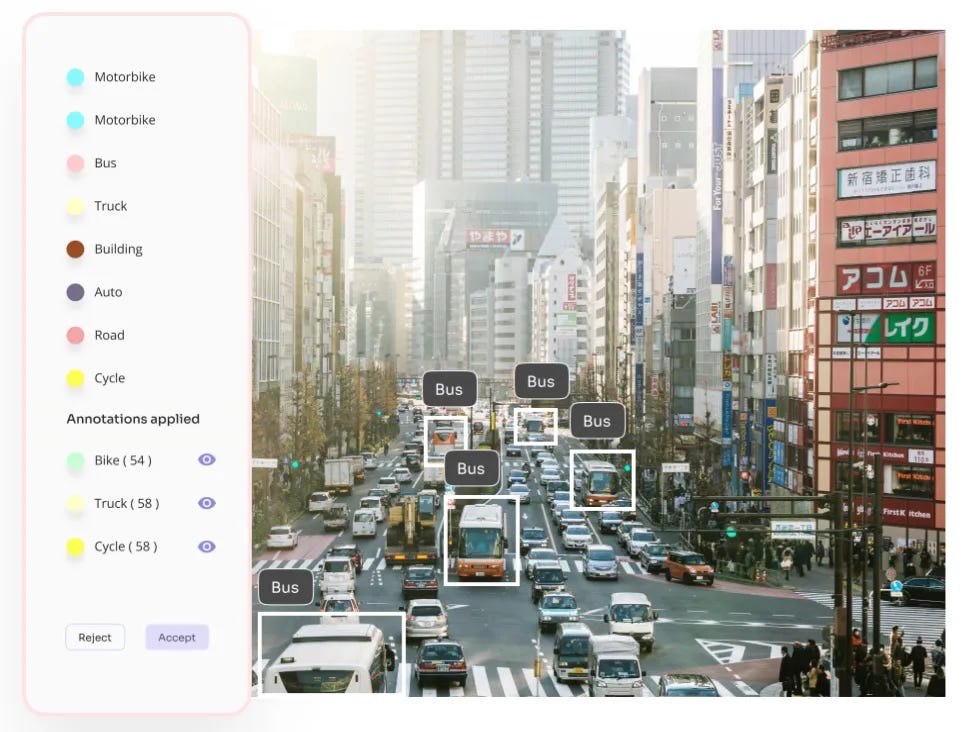Best Data Labeling UI: Tools, Features, and Best Practices
Hi there,
If you’ve ever worked on an AI project, you know how important data labeling is. It’s the backbone of every successful machine learning model. But let’s face it—labeling data can be tedious without the right tools. That’s where a well-designed data labeling user interface (UI) can make all the difference.
In today’s post, we’re diving into data labeling UIs—what makes them effective, which tools to consider, and best practices to make your workflow smoother. Whether you’re just starting out or looking to level up, this guide is for you.
Why Does the UI Matter in Data Labeling?
The user interface (UI) of your data labeling tool isn’t just about aesthetics; it directly impacts your workflow. A great UI helps you:
Work Faster: Intuitive features save time.
Reduce Errors: Built-in validation tools catch mistakes.
Collaborate Easily: Features like team reviews and comments streamline group efforts.
Customize Workflows: Adaptable UIs let you tailor the tool to your project’s needs.
Think of it like a great chef’s kitchen: the tools and setup make all the difference in delivering a masterpiece.
Top Data Labeling Tools with Excellent UIs
Here are some of the best tools to make your data labeling tasks more efficient:
1. Labellerr
Labellerr shines with its intuitive design and powerful features. Whether you’re labeling images, videos, or text, its scalability and quality control features make it a top pick.
2. Labelbox
This tool is known for its simplicity and collaboration-focused UI. Teams can annotate and review data seamlessly, making it perfect for large-scale projects.
3. SuperAnnotate
SuperAnnotate is all about efficiency. It offers advanced annotation options like polygon labeling and automatic annotations, making it a favorite for computer vision projects.
4. V7 Labs
A sleek UI and AI-powered auto-labeling make V7 Labs ideal for speeding up workflows. Its focus on image and video datasets makes it a favorite in the autonomous vehicle and healthcare industries.
5. Encord
Encord is your go-to for video annotations. Its frame-by-frame editing and efficient UI make video labeling less of a headache.
Best Practices for Data Labeling
Even the best tools need the right approach to maximize their potential. Here’s how you can get the most out of your data labeling projects:
1. Define Clear Guidelines
Labeling without clear instructions is like trying to solve a puzzle without the picture on the box. Define your categories, rules, and examples upfront.
2. Use Automation When Possible
Many tools offer pre-trained models for auto-labeling repetitive tasks. Use these features to save time and focus human effort on more complex annotations.
3. Prioritize Quality Control
Set up a review process to catch and fix errors early. Some tools offer built-in workflows for this, making it easier to maintain high standards.
4. Train Your Team
Spend time training annotators on both the tool and the project’s specific requirements. A well-trained team can drastically improve accuracy and speed.
5. Monitor Progress and Metrics
Keep an eye on key performance indicators like speed, accuracy, and error rates. Regularly reviewing these metrics helps optimize workflows.
Why It Matters
A great data labeling UI is more than just a convenience—it’s a competitive advantage. When your workflow is efficient, you can scale faster, reduce costs, and deliver high-quality data that powers better AI models.
Let’s Wrap It Up
If you’re serious about improving your AI workflows, investing in the right data labeling tools is a no-brainer. Platforms like Labellerr, Labelbox, and SuperAnnotate not only make the process easier but also ensure better results.
What’s your experience with data labeling tools? Have a favorite feature or tip to share? Drop a comment—I’d love to hear your thoughts!
Thanks for reading,
Raman
P.S. If you enjoyed this post, subscribe for more insights into AI and machine learning workflows.
Read more: https://www.labellerr.com/blog/best-data-labeling-user-interface-tools-features-and-best-practices/


